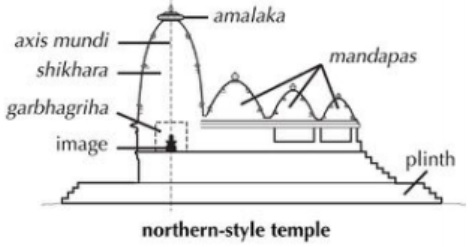Indian Heritage & Culture
PRASHAD Scheme
- 20 Aug 2021
- 6 min read
Why in News
Recently, the Prime Minister has inaugurated various projects in Somnath, Gujarat under PRASHAD (Pilgrimage Rejuvenation and Spiritual, Heritage Augmentation Drive) scheme at a total cost of over Rs 47 crore.
Key Points
- About:
- The Somnath Exhibition Centre, developed on the premises of 'Tourist Facilitation Centre', displays the exhibits from dismantled parts of the old Somnath temple and its sculptures having Nagara style Temple Architecture of old Somnath.
- This temple is also referred to as Ahilyabai Temple since it was built by queen Ahilyabai of Indore when she found that the old temple was in ruins.
- Shree Parvati Temple is proposed to be constructed with a total outlay of Rs 30 crore. This will include temple construction in Sompura Salats Style, development of Garbha Griha and Nritya Mandap.
- The Somnath Exhibition Centre, developed on the premises of 'Tourist Facilitation Centre', displays the exhibits from dismantled parts of the old Somnath temple and its sculptures having Nagara style Temple Architecture of old Somnath.
- PRASHAD Scheme:
- Launch:
- The ‘National Mission on Pilgrimage Rejuvenation and Spiritual Augmentation Drive (PRASAD)’ was launched by the Ministry of Tourism in the year 2014-15 with the objective of holistic development of identified pilgrimage destinations.
- The name of the scheme was changed from PRASAD to “National Mission on Pilgrimage Rejuvenation and Spiritual Heritage Augmentation Drive (PRASHAD)” in October 2017.
- Implementing Agency:
- The projects identified under this scheme shall be implemented through the identified agencies by the respective State/ Union Territory Government.
- Objective:
- Rejuvenation and spiritual augmentation of important national/ global pilgrimage and heritage sites.
- Follow community-based development and create awareness among the local communities.
- Integrated tourism development of heritage city, local arts, culture, handicrafts, cuisine, etc., to generate livelihood.
- Strengthen the mechanism for bridging the infrastructural gaps.
- Funding:
- Under it, the Ministry of Tourism provides Central Financial Assistance (CFA) to State Governments for promoting tourism at identified destinations.
- For components within public funding under this scheme, the Central Government will provide a 100% fund.
- For improved sustainability of the project, it also seeks to involve Public Private Partnership (PPP) and Corporate Social Responsibility (CSR) as well.
- Launch:
- Nagara or North Indian Temple Style:
- In North India it is common for an entire temple to be built on a stone platform with steps leading up to it. Further, unlike in South India it does not usually have elaborate boundary walls or gateways.
- While the earliest temples had just one tower, or shikhara, later temples had several. The garbhagriha is always located directly under the tallest tower.
- There are many subdivisions of nagara temples depending on the shape of the shikhara.
- There are different names for the various parts of the temple in different parts of India.
- The most common name for the simple shikhara which is square at the base and whose walls curve or slope inward to a point on top is called the 'latina' or the rekha-prasada type of shikara.
- The second major type of architectural form in the nagara order is the phamsana, which tends to be broader and shorter than latina ones.
- The third main sub-type of the nagara building is generally called the valabhi type. These are rectangular buildings with a roof that rises into a vaulted chamber.
Sompura Salats (Temple Architects)
- About:
- The Sompuras (or Sompura Salat) are a group of people who took up artistic and masonry works as an occupation and branched off from the Sompura Brahmin community.
- They are a section of Sompura Brahmin or Prabhas Patan which was once called Somapura because it was supposed to have been founded by Chandra (the Moon God).
- However, Sompura Brahmins do not accept them as proper Brahmins.
- They maintain the clan as a strict rule for marriage.
- Origin:
- The Sompuras originally hailed from Patna, Gujarat, and were invited to settle in Chittorgarh.
- Work:
- During the past five centuries, they have been involved in the construction and restoration of numerous Jain temples in Gujarat and southern Rajasthan, as well as temples built by Jains from regions in other parts of India.
- Though traditions in the family call for elders to pass the learnings of the Shilpa Shastras and the art of ancient temple architecture to the next generation, the modern age calls for certain upgrades to that technique.
- Ram janm Bhumi Temple is also designed by the Sompura Family.







